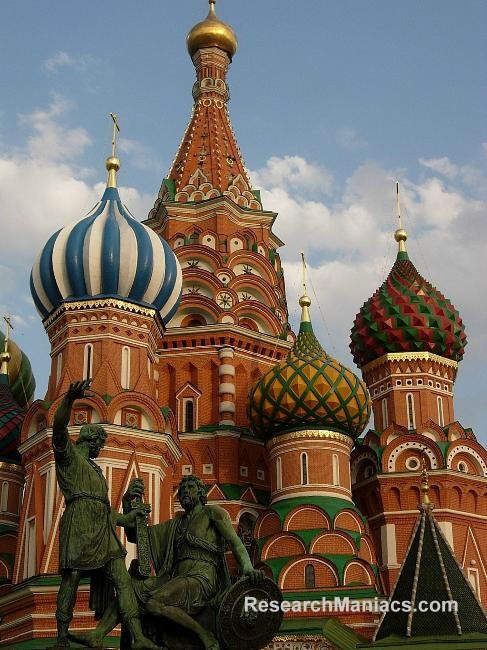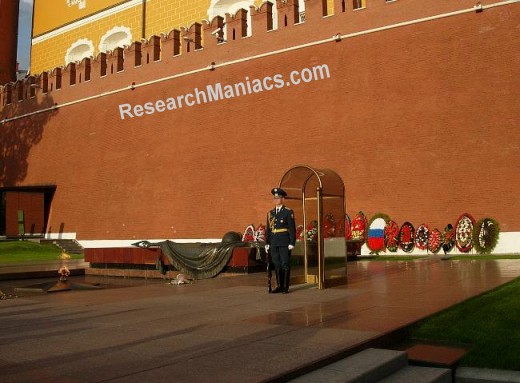Russia
Information about Russia
Founded in the 12th century, the Principality of Muscovy, was able to emerge from over 200 years of Mongol domination (13th-15th centuries) and to gradually conquer and absorb surrounding principalities.
In the early 17th century, a new Romanov Dynasty continued this policy of expansion across Siberia to the Pacific.
Under PETER I (ruled 1682-1725), hegemony was extended to the Baltic Sea and the country was renamed the Russian Empire.
During the 19th century, more territorial acquisitions were made in Europe and Asia.
Defeat in the Russo-Japanese War of 1904-05 contributed to the Revolution of 1905, which resulted in the formation of a parliament and other reforms.
Repeated devastating defeats of the Russian army in World War I led to widespread rioting in the major cities of the Russian Empire and to the overthrow in 1917 of the imperial household.
The Communists under Vladimir LENIN seized power soon after and formed the USSR.
The brutal rule of Iosif STALIN (1928-53) strengthened Communist rule and Russian dominance of the Soviet Union at a cost of tens of millions of lives.
The Soviet economy and society stagnated in the following decades until General Secretary Mikhail GORBACHEV (1985-91) introduced glasnost (openness) and perestroika (restructuring) in an attempt to modernize Communism, but his initiatives inadvertently released forces that by December 1991 splintered the USSR into Russia and 14 other independent republics.
Since then, Russia has shifted its post-Soviet democratic ambitions in favor of a centralized semi-authoritarian state whose legitimacy is buttressed, in part, by carefully managed national elections, former President PUTIN's genuine popularity, and the prudent management of Russia's windfall energy wealth.
Russia has severely disabled a Chechen rebel movement, although violence still occurs throughout the North Caucasus.

Above picture: The Cathedral of Saint Basil the Blessed in Moscow is more formally known as the Cathedral of Intercession of Theotokas on the Moat. This Russian Orthodox church, located in Red Square, was erected in 1555-61 to commemorate the capture of Kazan and Astrakhan; it is located in the exact geometric center of the city. Since 1928 it has operated as a division of the State Historical Museum. The church was totally secularized in 1929; it is part of the Moscow Kremlin and Red Square UNESCO World Heritage site.

Above picture: The Tomb of the Unknown Soldier in Moscow is a war memorial dedicated to Soviet soldiers killed during World War II. It is located in the Alexander Garden at the Kremlin Wall. First unveiled in 1967, a tombstone was added in 1975. The eternal flame emanates from the center of a five-pointed star located in front of the tombstone.

Above picture: The General Staff Building in Saint Petersburg's Palace Square was built in the 1820s. The arch commemorates the victory over Napoleon; it is topped by a bronze sculpture of Victory herself riding a six-horse chariot. Under the Russian Empire, the West Wing housed the General Staff, while the East Wing contained the Foreign Ministry and the Finance Ministry. The building is now part of the Hermitage Museum.
|
|
|
|